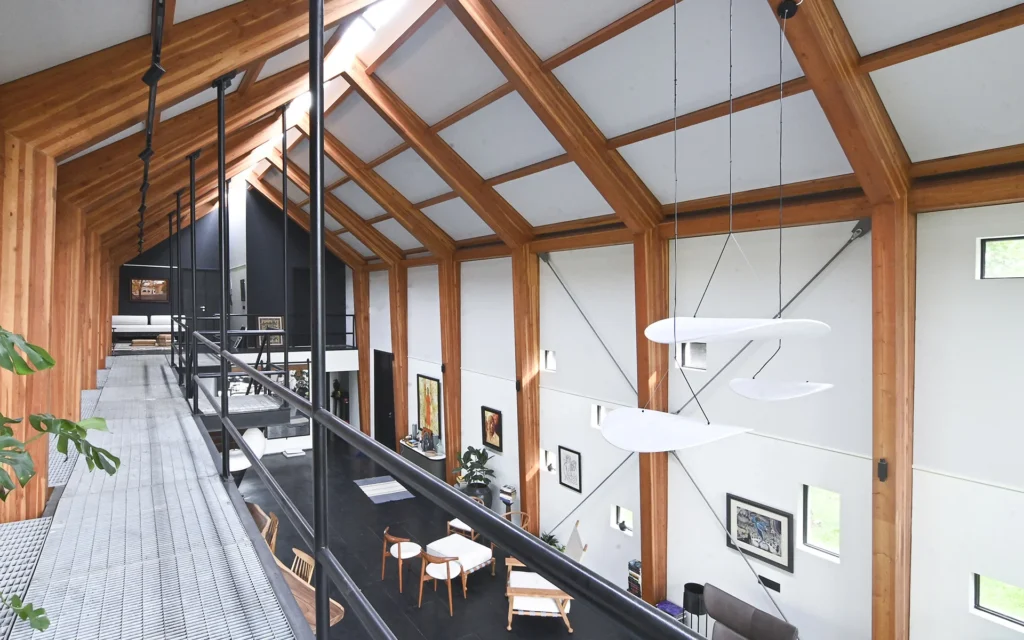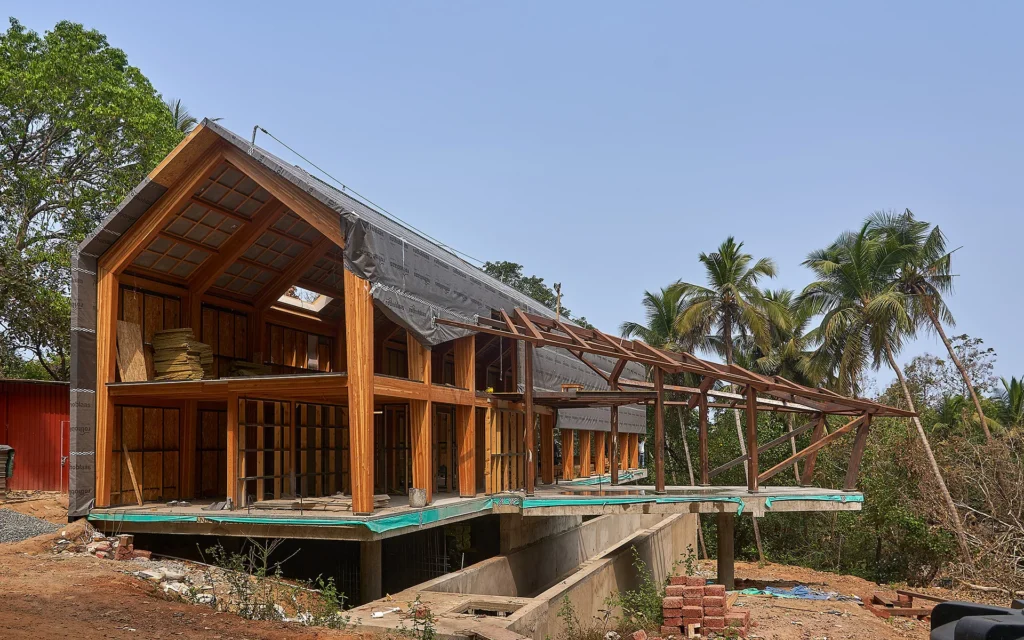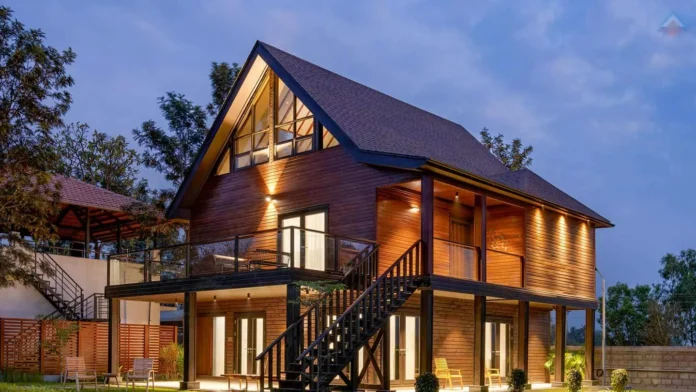Introduction
Mass timber construction is revolutionizing how we approach sustainable architecture. With its high strength-to-weight ratio, carbon-negative properties, and aesthetic appeal, it offers a compelling alternative to conventional materials like concrete and steel. This guide explores its benefits, challenges, and real-world applications, using The Timber Residence in Goa as a case study.
Why Mass Timber Matters in 2025
Sustainable construction has become a priority, and mass timber plays a key role in reducing the carbon footprint of buildings. Unlike concrete, which generates high emissions, mass timber sequesters carbon throughout its lifecycle. This makes it an environmentally responsible choice for architects and developers looking to balance durability with sustainability. Additionally, governments and sustainability organizations worldwide are pushing for stricter carbon regulations, further highlighting the need for eco-friendly building materials. Mass timber is also being recognized in green building certifications such as LEED and WELL, reinforcing its relevance in modern construction.
Innovative Use of Mass Timber: The Timber Residence

Designed by Architecture Discipline for Sahil Barua, The Timber Residence in Goa exemplifies the adaptability of mass timber. The 8,650 sq.ft. home is perched on a steep slope, offering views of the Arabian Sea and Chapora River. The project utilized glulam (glued laminated timber) portal frames prefabricated in New Delhi, ensuring precision, minimal site disruption, and rapid assembly. The flexibility of prefabrication allowed for a modular, future-proof design, where components can be dismantled and repurposed after decades of use, minimizing material wastage.
Key Benefits of Mass Timber Construction
- Structural Integrity & Efficiency
- Engineered wood products like glulam offer exceptional strength and flexibility, enabling expansive, column-free interiors that enhance spatial fluidity. The high strength-to-weight ratio allows for larger spans without the need for additional support, resulting in open-plan designs ideal for both residential and commercial applications.
- Sustainability & Carbon Sequestration
Unlike concrete, which emits CO₂ during production, mass timber absorbs and stores carbon, making the construction process carbon-negative. Research suggests that if mass timber replaced concrete and steel in just 10% of buildings globally, it could significantly reduce greenhouse gas emissions and contribute to climate goals. - Aesthetic & Functional Appeal
With its natural warmth and tactile quality, glulam eliminates the need for additional cladding, reducing material waste and enhancing visual appeal. This makes it a preferred choice for architects seeking both functionality and a distinct design aesthetic. The biophilic nature of wood also enhances occupant well-being by creating a warm, inviting atmosphere. - Prefabrication for Reduced Waste
The modular nature of mass timber allows for off-site fabrication, leading to lower on-site waste, faster construction times, and better resource efficiency. Studies show that prefabrication reduces construction waste by up to 90% compared to traditional methods. It also minimizes labor costs and site disruption, making it an efficient alternative in urban environments.
Addressing Challenges: Durability & Climate Resilience
Given The Timber Residence’s coastal location, concerns about timber’s moisture resistance were carefully addressed. The team implemented:
- Yakisugi (charred wood) treatment to enhance durability and prevent decay.
- Elevated stilts and concrete retaining walls to protect the structure from moisture damage.
- Glazed openings and floating decks to seamlessly integrate indoor and outdoor spaces while maximizing ventilation.
Additionally, mass timber has undergone extensive testing to assess fire resistance and longevity. Contrary to common concerns, cross-laminated timber (CLT) and glulam have demonstrated exceptional fire resistance, with a charred outer layer forming a protective barrier that slows down combustion. Advances in protective coatings and treatments further enhance timber’s resilience, ensuring it meets modern safety standards.
Mass Timber’s Future in India

Despite its benefits, mass timber adoption in India remains limited due to high costs and a lack of local suppliers. However, as awareness grows and supply chains improve, mass timber is expected to gain traction as a viable alternative for sustainable construction. Some leading universities and research institutions are now studying the feasibility of scaling mass timber production in India, which could lead to greater affordability in the coming years.
The demand for eco-conscious architecture is also driving developers to explore innovative solutions. In cities like Bangalore and Mumbai, where high humidity levels pose a challenge, new moisture-resistant engineered wood products are being introduced to enhance durability. Furthermore, the Indian Green Building Council (IGBC) is actively promoting the adoption of sustainable materials, offering incentives for projects incorporating mass timber.
Conclusion
Mass timber construction offers a future-proof solution for sustainable architecture, blending strength, adaptability, and environmental responsibility. As showcased in The Timber Residence, when executed thoughtfully, it delivers durability, aesthetic appeal, and reduced carbon footprint—marking a paradigm shift in modern architecture. Additionally, as material advancements continue and global demand for sustainability increases, mass timber is poised to become a dominant force in construction, offering a sustainable alternative to traditional building materials.
Are you considering mass timber for your next project? Let’s discuss how this innovative material can shape your vision for the future!


